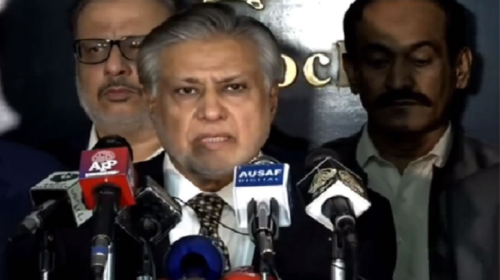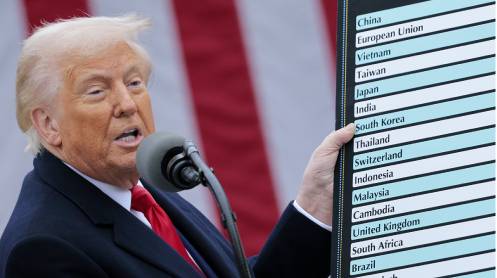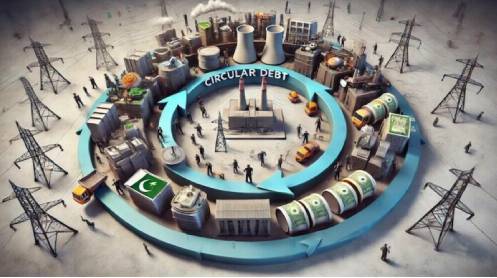Finance Minister Ishaq Dar on Thursday struck a deal with exporters under which subsidised electricity at nearly Rs20 per unit would be provided to them in a move that will restore the trader community’s confidence in the government but would not stop misuse of the subsidy for domestic production.
“The per unit electricity cost for the five export-oriented sectors has been agreed at Rs19.99 per unit that will involve Rs90-100 billion annul subsidies,” Dar announced in a hurriedly-called news conference. He made the announcement after meeting with a delegation of the exporters.
“The government will give Rs10 to Rs15 per unit subsidy to the exporters,” said a senior official of the Power Division.
In a positive development, Dar also delinked power tariff for the industries from the US dollar, saying “we should start thinking in the rupee”.
The finance minister once again reiterated that the real value of the local currency was below Rs200 and he wanted to fix the tariff at Rs18 per unit by keeping in mind around Rs200 per dollar rate.
However, on the insistence of the exporters, the rate is fixed at Rs19.99 per unit, he added. To a question, the finance minister said that he did not feel the need to take prior permission of the International Monetary Fund for giving the subsidies, saying that the fund would be taken into confidence at an appropriate time.
“I have fiscal space in the budget to give the subsidy to the exporters,” said the finance minister. He said that the IMF team would be visiting Pakistan from October 26 for the review talks.
The delegation is arriving on a 10-day visit to review implementation on the IMF programme for July-September period. However, the government seems to be in breach of some commitments, including further increasing electricity prices by 91 paisa per unit with effect from October 1.
The government had committed to provide electricity to the exporters at 9 cents per unit for the fiscal year 2022-23 but suddenly discontinued the practice from October 1 after the Rs20 billion subsidy was consumed in less than two months.
The Power Division has estimated that the five export-oriented sectors will consume 12 billion units of electricity in the current fiscal year, which is 50% more than the consumption in a year when the economy grew at the rate of 6%.
The exporters suspect that the electricity consumption estimates are inflated ones and the actual subsidies will be less than Rs100 billion. But the official of the Power Division said that the 12 billion consumption estimates are based on the actual consumption in August.
The withdrawal of the subsidies had created resentment among the exporters who threatened to close their factories from next week.
Dar said that Prime Minister Shehbaz Sharif and former finance minister Miftah Ismail had committed to provide electricity at 9 cents. “It is my responsibility to take the necessary cabinet approvals for the Rs19.99 per unit cost,” he added.
The decision to provide electricity at reduced rates would restore investors’ confidence on the government. However, the government has not devised a new mechanism to plug the misuse of the subsidy.
The subsidized electricity is also used for domestic production in the name of exports. The government can address the issue by crediting the subsidy against the exports into bank accounts instead of giving it through energy.
There has also been criticism against the exporters for not enhancing exports despite availing billions of rupees subsidies and 100% currency devaluation.
“The historical trend suggests that a 10% inflation-adjusted devaluation leads to 5% increase in the exports in the longer run,” said Gonzalo Varela, an economist with the World Bank. He added that rapidly increasing inflation in Pakistan was eating up the benefits of the rupee devaluation for the exporters.
The strengthening of the currencies of the trading partners and the supply constraints also limited the impact of the currency depreciation on the exports, Gonzalo added.
Pakistan’s trade deficit shrank over one-fifth to $9.2 billion in the first quarter of the current fiscal year solely on the back of a steep fall in imports as exporters failed to take advantage of 100% currency devaluation over the past five years.
According to the PBS, exports stood at mere $7.1 billion, up $129 million, or 1.8%, during the July-September period. The unimpressive export proceeds should be a matter of concern as they indicate that the country will not only miss the annual export target of nearly $38 billion, but the receipts may also be lower than the previous fiscal year.
The monthly export bill is hovering around $2.5 billion, barring last fiscal year when it briefly touched $3 billion due to high global commodity prices.
The finance minister said that actual increase in exports due to the rupee devaluation was just $800 million.





